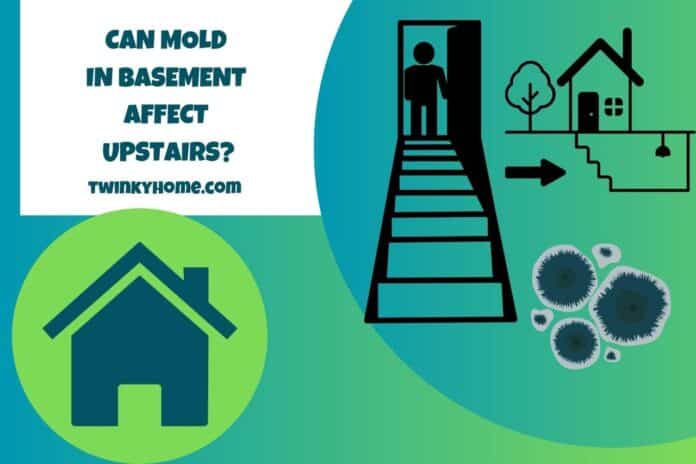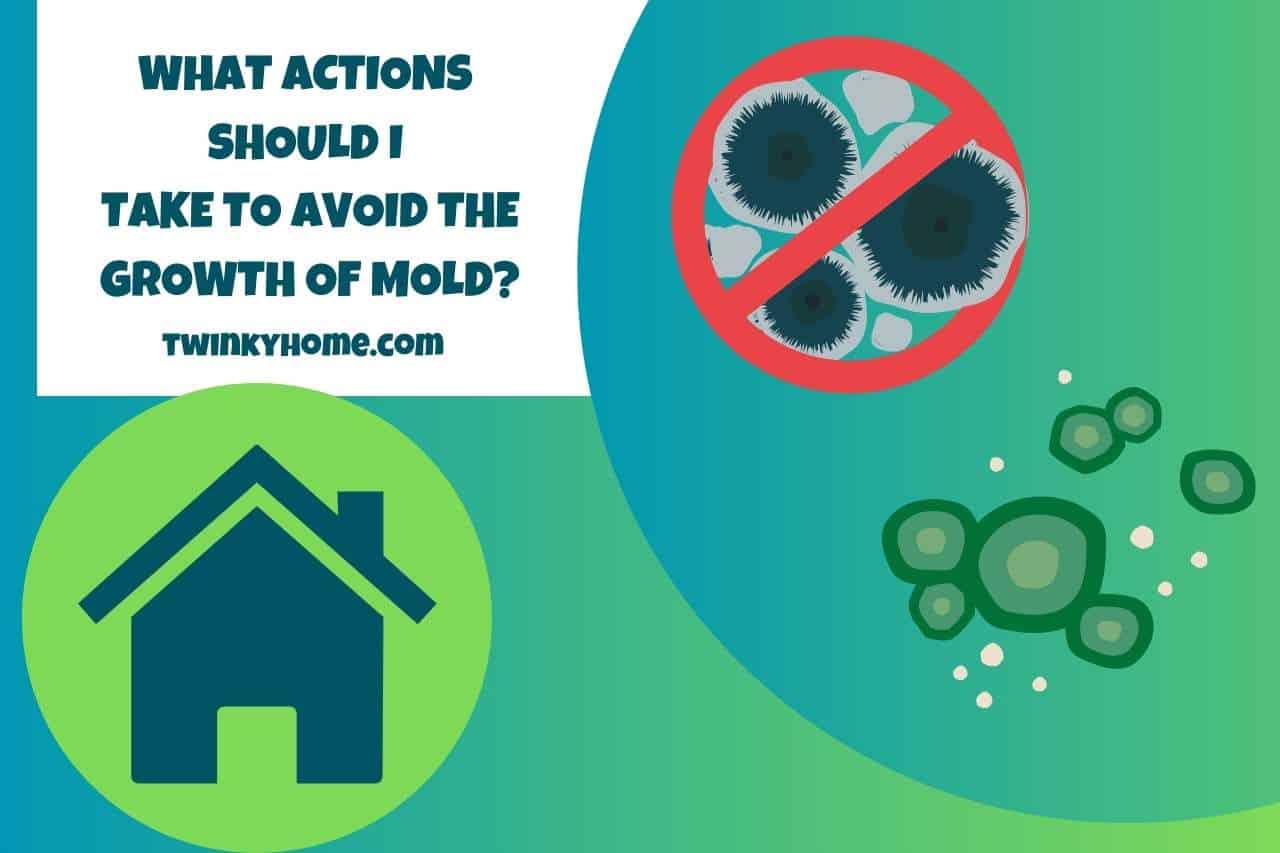The presence of mold in our house is something we wish to avoid. The spores have a wide range of effects on individuals, and based on which ones exist, they may result in higher respiratory problems. Any area of the residence that is moist will have mold. Can mold in basement affect upstairs?
When you don’t handle mold properly and promptly, it might develop into a significant problem. Here, we’ll examine numerous mold species that may be present in your basement and crawl area. We’ll also discuss what to do with it if you discover it.
Can Mold in Basement Affect Upstairs?
The upstairs is indeed affected by the mold that exists in the basement. Mold spores can move throughout the air and contaminate the source of fresh air. Therefore, the mold might enter the remainder of the home whenever you reopen the basement door.
This does not imply that the only option is to close the entrance to the basement. The mold has a higher chance of growing in a sealed-off basement.
Mold only has moisture to develop in and particles to feed on if its air supply isn’t frequently disrupted.
A huge amount of mold spores is reintroduced into the primary residence every time you open the door, which is inevitable.
How does Mold Get Out Of the Basement?
Mold has a few different methods to go through the basement to different areas of the house. The most typical scenario would be for the mildew to keep growing covertly beneath the flooring or within the walls.
The microbes will ultimately travel from the initial spot to other close-by regions as a result of time and growth.
The air conditioning or furnace is a second means through which mold can travel from the cellar.
Air movements move spores from their initial location and disperse them across the remainder of the house. As a result, mold may begin to form in the air conduits and ultimately spread throughout the upper portion of the house.
The skin, hair, as well as garments you are wearing, may all attract and hold mold spores. Regardless of how infrequently you went down there, every time you did, you were going to start bringing mold spores up with you. The microbes are then spread as you make your way back throughout the home.
Not forgetting that any cellar mold can attach to objects there. If you keep objects in the lower level for storage and you remove them from storage, mold growth could follow.
It may be on the box of cardboard that the products are housed in instead of necessarily being on the items themselves. You might not anticipate how mold in your basement might spread throughout the rest of the home.
What Risks do you Face If Mold from your Basement Spreads Across your House?
Mold exposure is a common occurrence for people, as well as it’s not dangerous. Mold is everywhere, particularly in an organic, outdoor setting. Because it decomposes organic materials like decaying trees or decaying leaves, mold is essential to our ecology.
In your house, mold development can have negative health effects. Since mold degrades drywall as well as wood, uncontrolled mold development can potentially harm your house. Therefore, if there’s mold inside the cellar, you need to get rid of it right away.
Despite the fact that black mold represents the variety of mold that most people are afraid of, numerous species of mold can really be dangerous to people. The issue arises when the mold spores are inhaled inside by those who have impaired immune systems, asthma, allergic reactions, or mold hypersensitivity.
A number of responses may result from this.
- Chronic tiredness.
- Clogged nose.
- Respiration difficulty.
- Skin conditions.
- Wet, itchy eyes.
What Actions should I Take to Avoid the Growth of Mold?
Check that your Basement is Properly Aired
Sealing your basement is a single of the essential things that you must do to be resistant to flooding your house. By caulking the basement, you may prevent water from getting in, prevent moisture damage to your property, and improve protection from flooding.
Using an impermeable membrane or sealant, you may seal the floor of the basement. Make careful to caulk any obvious cracks and gaps in the walls and floor of your cellar. Additionally, re-caulk the windows and entrances, including hatchways in the cellar.
If your Basement has Any Cracks, Fix Them
It’s crucial to get any holes in the basement’s walls fixed right away as you find them. A qualified waterproofing specialist can fix the cracks then completely seal them, and keeping humidity from leaking in and shielding your property from the development of mold.
Invest in a Dehumidifier
The danger of mold formation can be decreased by utilizing a dehumidifier in order to maintain air inside the cellar dry. Dehumidifiers are available in a range of sizes and may be mounted on the wall, on the ground, or on the roof. Select a size that fits the room, and periodically monitor the moisture levels to make sure they stay beneath 60%.
Routinely Sanitize and Cleanse
Maintaining a regular cleaning and disinfection schedule constitutes one of the most crucial things you are able to do to stop the formation of mold within your house. Maintaining a clean, clutter-free house is vital because mold thrives in moist, dark environments.
Weekly use of vinegar or a bleach-based solution for wiping off surfaces is recommended. Releases or leaks should be cleaned up as a way. Additionally, you want to raise the blinds and drapes to let through as much daylight as you can.
Examine the HVAC System
Remember to schedule routine maintenance for your central air conditioner when you own one. At regular intervals, the filters have to be changed, and the appliance ought to be checked for leaks as well as fractures.
Make sure to get the ductwork cleaned and examined at least annually if the heating system uses forced air.
What does It Cost to Get Mold Out of a Basement?
Several variables will affect how much it will cost to remove mold from the cellar. These factors include the likelihood that you need to hire expert mold remediators, the size and position of the mold tumors, the severity of any underpinning moisture problems, and how big and where the fungus growths.
The typical cost of removing mold from a basement ranges from $500 to $3,000 if you hire expert mold remediators. Foundation sealing for a house normally costs between $2,100 along with $6,000.
Mold removal in the cellar may be accomplished rather cheaply if you choose to do it yourself. The typical price of remediating a house is between $50 as well as $300.
Watch this one,
Video Credits – WaysAndHow
Discover More: Related Articles You Can’t Miss








![OGX Biotin And Collagen Shampoo Review [Updated One] Ogx Biotin And Collagen Shampoo Review](https://twinkyhome.com/wp-content/uploads/2022/03/Are-chicken-Super-Noodles-vegetarian-1-100x70.jpg)